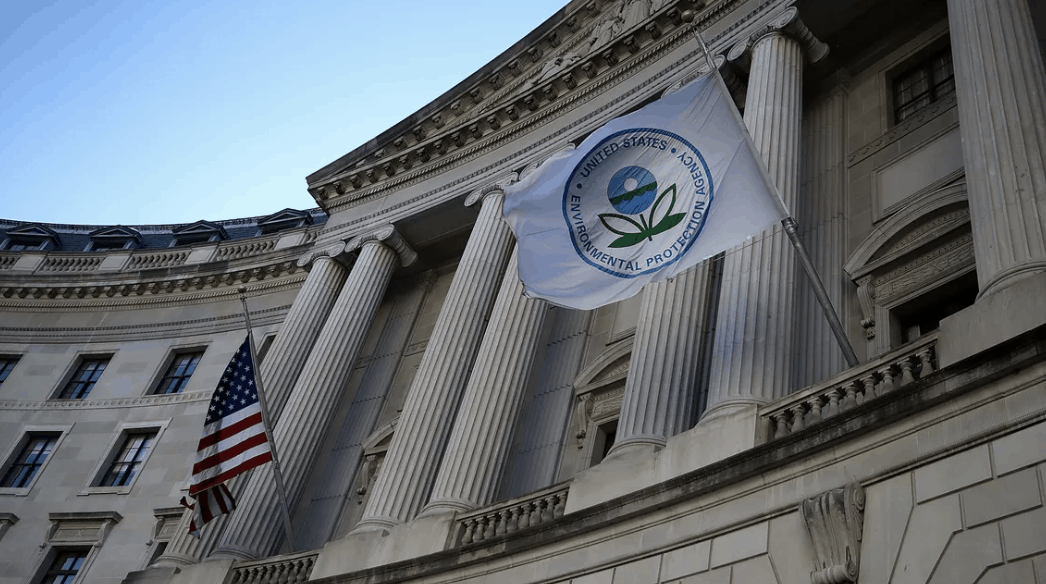Environmental Red Tape Could Roadblock Green New Deal

 The Green New Deal reads like a progressive’s letter to Santa, a wish list that is, by the admission of Rep. Ocasio-Cortez’s (D-NY) chief of staff, designed to reorder fundamentally American society along quasi-socialist lines. It’s easy to go on about its faults, but what has been ignored are the obstacles that the nation’s existing environmental permitting system itself sets in the way of the Green New Deal.
The Green New Deal reads like a progressive’s letter to Santa, a wish list that is, by the admission of Rep. Ocasio-Cortez’s (D-NY) chief of staff, designed to reorder fundamentally American society along quasi-socialist lines. It’s easy to go on about its faults, but what has been ignored are the obstacles that the nation’s existing environmental permitting system itself sets in the way of the Green New Deal.
The National Environmental Policy Act of 1970 (NEPA) mandates a series of analyses on every major action involving federal money or land or requiring federal permitting. If you are attempting to build a road on land owned by the U.S. Forest Service, then the USFS would have to look into the environmental effects of building that road. After the USFS completes the first stage of the NEPA process, the Environmental Assessment—which will take about a year—they’ll either issue a Finding Of No Significant Impact, which would let you build it, or continue on to creating an Environmental Impact Statement, or EIS.
An EIS would be a detailed investigation, and the implications of reasonable alternatives. According to a study by the Council on Environmental Quality, it takes about four and a half years for an agency to complete an Environmental Impact Statement. These aren’t cheap, either. Only the Department of Energy actually tracks the cost of an Environmental Impact Statement, but the median cost of an EIS is $1.5 million.
Now, let’s say that your road-building project goes through the process without comment, and the initial draft is accepted by the Environmental Protection Agency. That’s not the end of things. If there’s anyone who believes that they would be harmed by your project—and even someone who has been through the area once before and thinks that building the road would make it less aesthetically pleasing is “harmed”—they have standing to sue via NEPA, embroiling your project in years of litigation.
The Green New Deal, as it stands, is rather vague, with broad goals instead of specific proposals, so there’s some estimating that has to be done. But even a conservative estimate paints a very negative picture. The GND is designed to, among other aims, run the United States entirely on renewable energy. The United States uses about 4,200 billion kilowatt hours of power a year, 83% of which comes from fossil fuels or nuclear power. The most common forms of renewable energy in the United States are wind and solar, but, for the purpose of argumentation, let’s work with just wind. The average wind turbine generates about six million kilowatt hours’ worth of power a year, and there are about fifty wind turbines in the average wind farm. In order to take the United States to only renewables, that comes out to be 576,000 wind turbines, or 11,526 wind farms—each of which would require an environmental impact statement.
The Green New Deal requires the complete refurbishment of the American electrical system with a “smart grid”—a series of high-tech devices which would create a more flexible grid that could also charge users based on power consumption amount and time. There are about 70,000 power substations in the U.S. Existing smart grid programs can upgrade 31 substations at a time. That comes out to be 2,250 individual programs, which will each require years of analysis and litigation before the first shovel breaks ground.
It also requires the “upgrading [of] all existing buildings in the Unites States and building new buildings to achieve maximal energy efficiency, water efficiency, safety, affordability, comfort and durability, including through electrification.” There are, in the United States, about 127 million households. In previous upgrade projects by the Department of Housing and Urban Development, there’s been about 150 units in each project. That comes out to be, using that 127 million number, 850,000 individual projects. Even if we assume that about seventy percent get weeded out of the NEPA program early by a part of the process called a Categorical Exclusion—in which the government can skip the NEPA analysis on a project that is deemed to be in a category which has no significant environmental impact—there are still 255,000 individual projects remaining.
For those without a calculator, that’s 268,776 projects. At $1.5 million each, that’s a price, for paperwork alone, of about $400 billion. Moreover, the U.S. government has limited capabilities to complete Environmental Impact Statements. There are only about two hundred EISs done each year, across the entire federal government. Each of these 268,776 would have to be done in sets of two hundred, and it takes about four years to complete an EIS, on average. It would thus take approximately 5,300 years just to complete the NEPA paperwork.
Of course, the defenders of the Green New Deal could critique that 5,300 year figure. Surely, they could say, the agencies implementing the Green New Deal would somehow avoid these NEPA requirements, or the hypothetical democratic president would declare some sort of imaginary “climate emergency” and simply get rid, by the stroke of a hypothetical pen, of these pesky regulations.
Setting aside the dubious legality of those objections, that response highlights an obvious truth—the NEPA process is broken. The idea that an infrastructure project should have to deal with five years and millions of dollars of paperwork before even breaking ground—in the best case scenario—is, frankly, insane. Rather than a sober environmental investigation, we’re stuck with a system that drags on forever. If we really are in a catastrophic climate crisis, then reform isn’t just helpful, it’s absolutely mandatory. NEPA has created an enormous vortex of time and money that leads to infrastructure projects being derailed and delayed on a massive scale. It must be reformed.
See also the Competitive Enterprise Institute study “What the Green New Deal Could Cost a Typical Household” by Kent Lassman and Daniel Turner.